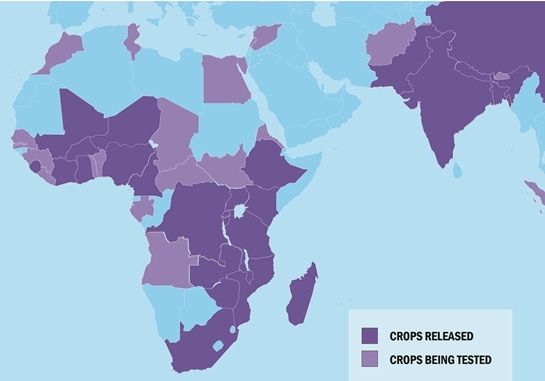A recently published paper in the Global Food Security journal summarizes key evidence on biofortification and discusses delivery experiences, as well as farmer and consumer adoption. World Food Prize laureate and HarvestPlus founder and ambassador-at-large Howarth Bouis co-authored the review with Amy Saltzman. You can read the abstract below, and access online or download the open-source full paper.
Improving nutrition through biofortification: A review of evidence from HarvestPlus, 2003 through 2016
Biofortification is a feasible and cost-effective means of delivering micronutrients to populations that may have limited access to diverse diets and other micronutrient interventions. Since 2003, HarvestPlus and its partners have demonstrated that this agriculture-based method of addressing micronutrient deficiency through plant breeding works. More than 20 million people in farm households in developing countries are now growing and consuming biofortified crops. This review summarizes key evidence and discusses delivery experiences, as well as farmer and consumer adoption. Given the strength of the evidence, attention should now shift to an action-oriented agenda for scaling biofortification to improve nutrition globally. To reach one billion people by 2030, there are three key challenges: 1) mainstreaming biofortified traits into public plant breeding programs; 2) building consumer demand; and 3) integrating biofortification into public and private policies, programs, and investments. While many building blocks are in place, institutional leadership is needed to continue to drive towards this ambitious goal.
